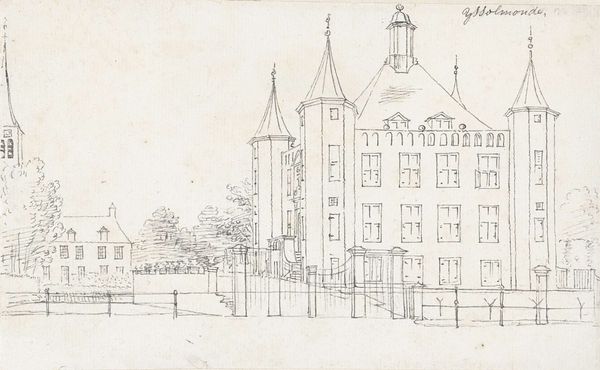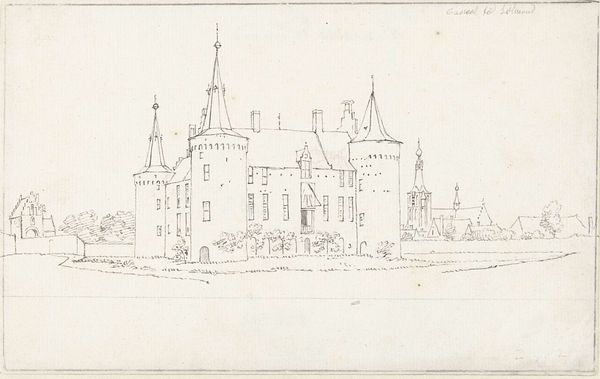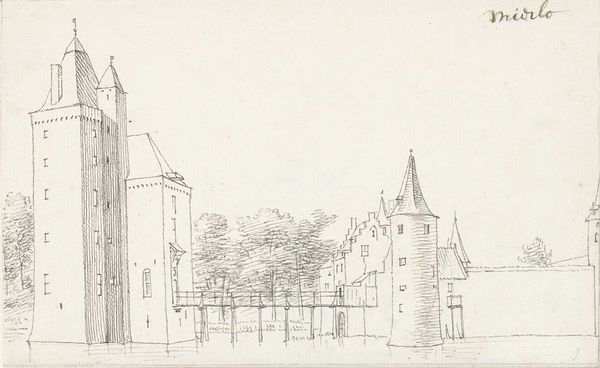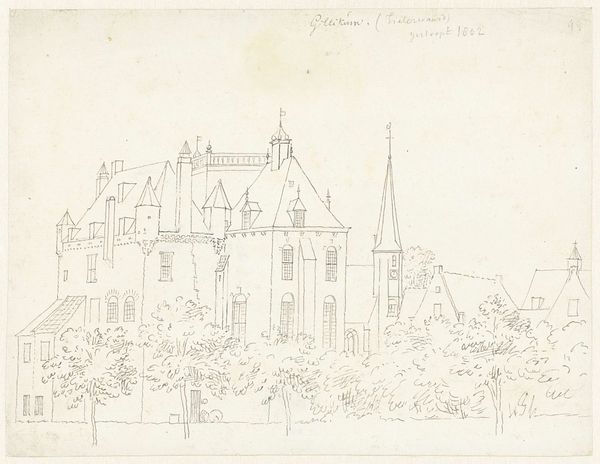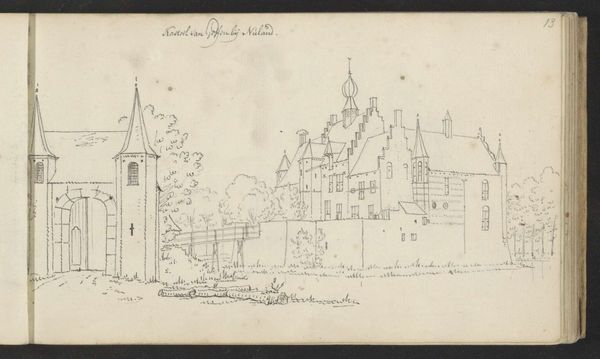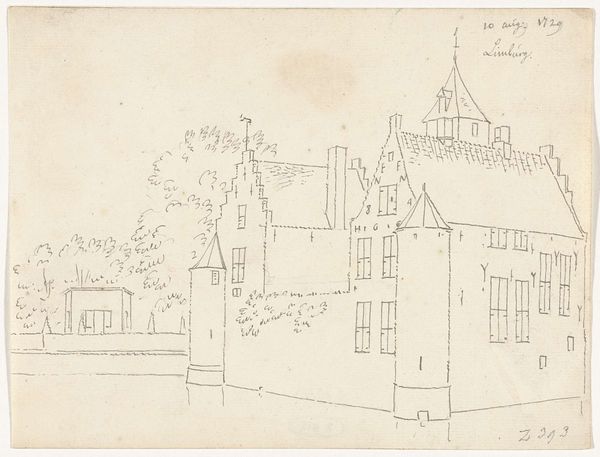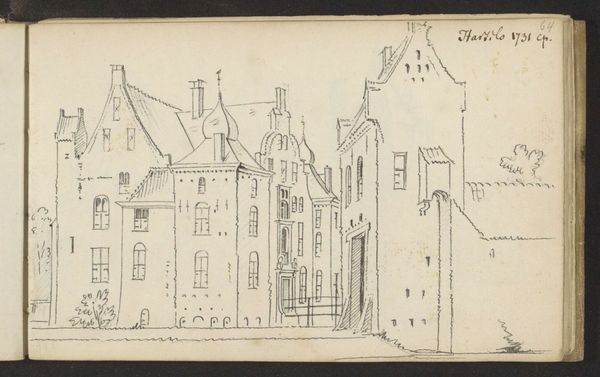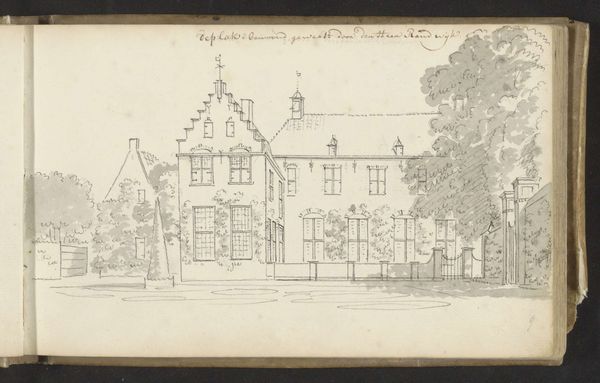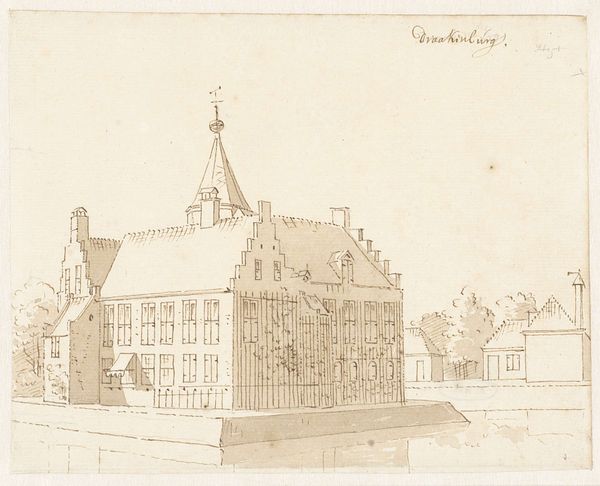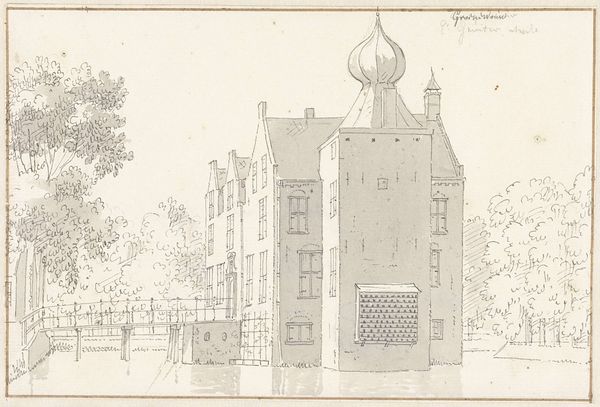
drawing, pen, architecture
#
architectural sketch
#
drawing
#
aged paper
#
quirky sketch
#
dutch-golden-age
#
sketch book
#
landscape
#
personal sketchbook
#
idea generation sketch
#
sketchwork
#
sketchbook drawing
#
pen
#
cityscape
#
storyboard and sketchbook work
#
architecture
#
initial sketch
Dimensions: height 115 mm, width 201 mm
Copyright: Rijks Museum: Open Domain
Editor: So here we have Cornelis Pronk’s drawing, "Het Huis te Voorn, bij Utrecht," placing it somewhere between 1701 and 1759. The Rijksmuseum tells us it’s created using pen and drawing materials, depicting an architectural sketch of a house. It has this spontaneous, almost utilitarian feel, like a quick study. What catches your eye in this piece? Curator: The immediate thing I consider is the materiality of this drawing within Dutch Golden Age landscape art. We're looking at a seemingly simple pen and ink drawing, but what about the paper? Was it locally sourced? What was its production like? Who had access to this type of material? Pronk's choice of these specific, perhaps readily available, materials speaks volumes about the art market and the artistic practice of the time. Editor: That's fascinating, I hadn't considered the socioeconomic factors affecting the materials themselves. How does that impact the artwork overall? Curator: Well, it shifts our perspective. Instead of focusing solely on Pronk's artistic genius, we acknowledge the means of production—the labor, trade networks, and social hierarchies that enabled him to create this drawing. The materials are not passive; they carry histories. It makes us wonder, was the relative accessibility of paper a democratizing factor in art production? Could more artists, regardless of their status, create sketches like these? Editor: So it is not only the artistic intention but also the access to the materials that matters here. The type of pen, the quality of ink available… that adds another layer of meaning. Curator: Precisely. Examining the materials pushes us beyond the purely aesthetic appreciation. It allows us to engage with the social and economic context of its creation. How readily available was it, what does that imply about artistic skill versus social standing? It makes you think. Editor: This really changed how I will look at artworks from now on, understanding the historical production aspect. Curator: Exactly! Hopefully now the listeners will be mindful of the broader forces that made that very stroke of pen possible.
Comments
No comments
Be the first to comment and join the conversation on the ultimate creative platform.

